Anopterus macleayanus
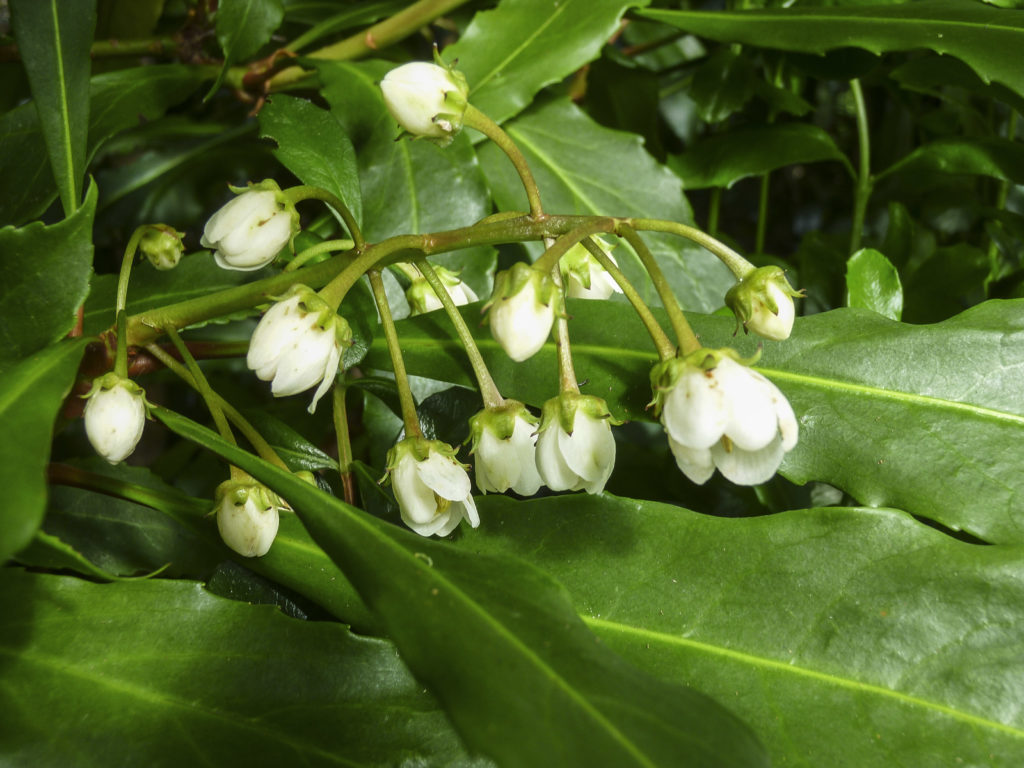
Anopterus macleayanus is found in sub-tropical areas of south-eastern Queensland and north-eastern NSW. It is a shrub or tree to about 6 to 8 metres with a spreading open crown to about 4 metres. In cultivation, it does not grow as tall as in its natural habitat of higher elevations where it is constantly moist.
Acacia prominens

Acacia prominens is known the Gosford Wattle or Golden Rain Wattle. The Gosford Wattle is a dense, tall shrub or medium tree. Foliage is often retained to ground level. The phyllodes are up to four centimetres long, blue-green with a conspicuous gland on the upper margin (see thumbnail image) about one third from the left.
Acacia parramattensis
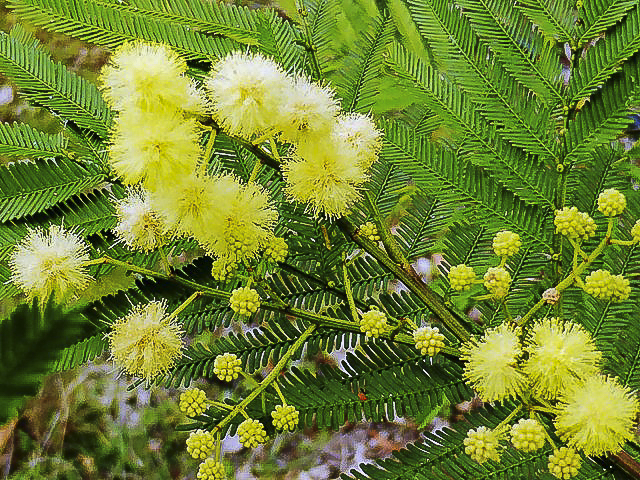
Acacia parramattensis is known as the Sydney Green Wattle or Parramatta (western Sydney) Wattle and is a spreading tree that may reach a height of 15 metres. The leaves are bipinnate and dark green. There is a large gland at the base of each pair of pinnae and sometimes a smaller gland between pinnae (see thumbnail). Ball-shaped cream flowers are displayed in summer and winter. Pods are linear and clothed with fine hairs that are pressed close to the surface.
Acacia oshanesii

Acacia oshanesii a tall shrub or small tree. In our cold climate garden our specimen, after a number of years, has reached a height of five metres with a similar spread. The flower heads are globular, pale yellow and carried in racemes at the base of the leaves. The flowering period is mainly late winter to spring with sporadic flowering at other times. Our specimen carries blooms in late summer. Both foliage and flowers are attractive features.
Acacia longifolia

Acacia longifolia is commonly known as the Sydney Golden Wattle, and is a tall shrub or small tree that may reach a height of seven metres. Bright flowers are carried in spikes with a pair of spikes at the base of each phyllode. In late winter and spring the blooms are both conspicuous and profuse. Straight or curved pods follow the flowers and hold many seeds.
Acacia ingramii
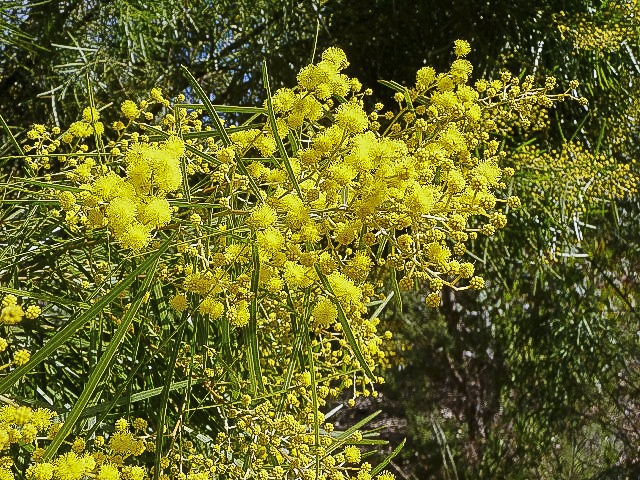
Acacia ingramii is a tall, dense shrub or small tree that may reach a height of seven metres. Phyllodes are linear, about 10 centimetres long with a small hook. They are said to carry two glands on the margin. One is near the base and the other about halfway along. Close examination of our specimen revealed a prominent basal gland on all phyllodes but no evidence of a second gland.
Acacia implexa
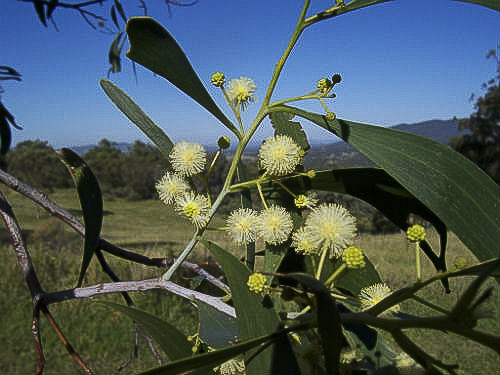
Acacia implexa, the Hickory Wattle, is a small to medium sized tree that will reach a height of 12 metres. Bark is rough and greyish. Phyllodes are sickle-shaped and up to 20 centimetres long with a small basal gland.
Acacia doratoxylon
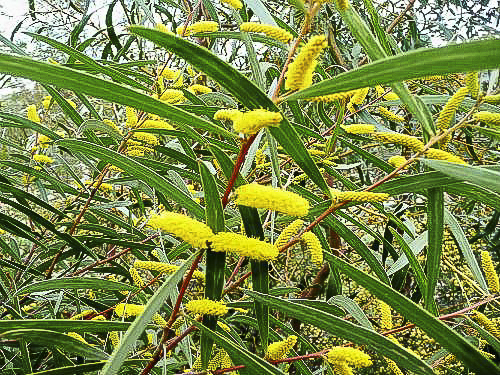
Acacia doratoxylon, Currawong or Spearwood, is an upright small tree that may reach a height of eight metres. The bark is hard and fissured. Phyllodes are more or less linear, up to 20 centimetres long and 7 millimetres wide and grey-green. Usually glands are absent but occasionally a small gland is present at the base of the phyllodes.
Acacia cheelii
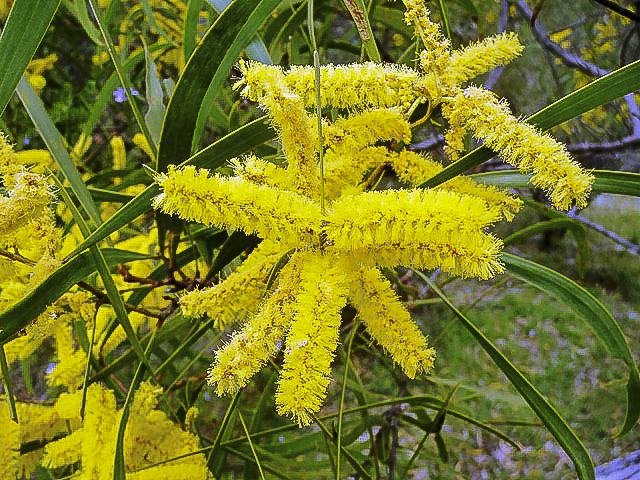
Acacia cheelii is a small tree with flaky bark inclined to be ribbony. The long phyllodes are up to 16 centimetres long by three centimetres wide, sickle-shaped, bluish-green with three prominent veins. The rod-shaped, golden flower heads are up to six centimetres long and held in clusters of two or three in the phyllode axils. The flowering period extends from September to November.
Acacia cardiophylla
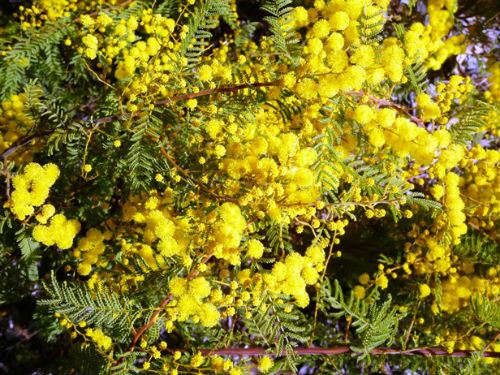
Acacia cardiophylla is widely known as the Wyalong Wattle and is said to grow to a height of four metres. The plants in our cold climate garden, reach a height of two metres with a similar spread. The bipinnate foliage is soft and greyish-green. Golden yellow flowers are carried in globular heads with 20-30 blooms in each head.
